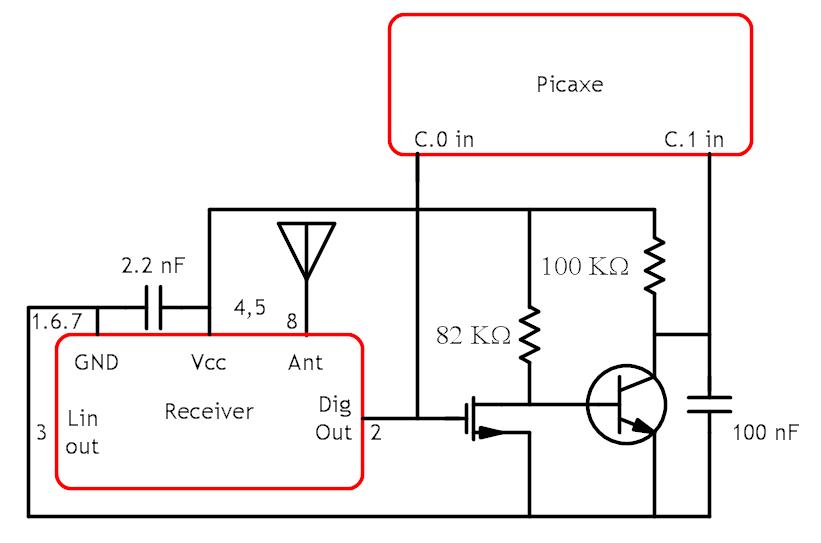The key to practical PICAXE use is not to use the receiver output unless a real signal, not noise, occurs. The transmitter coding is on-off keying, but noise between the on pulses seems to be suppressed, perhaps by AGC (Automatic Gain control). This is achieved by reading the receiver output only in an interrupt routine. To minimize the number of interrupts the transmitter emits a 20-ms burst prior to the serial string.
In the receivers the receiver module digital output is constant noise. 3 successive steps provide rock-solid control performance.
Step one is to use interrupts made by this circuit which rejects noise:

Step two. Almost all of the noise pulses are too short for the integrator to rise sufficiently to interrupt the Picaxe. The real signal however is preceded by a 20ms pulse, which does cause an interrupt which goes to an interrupt port. The unmodified receiver output goes to an input port. The interrupt procedure first measures the length of the remainder of the 20ms pulse. Almost all of the false interrupts will be shorter, which causes the interrupt procedure to return
Step three uses the provision of the SERIN command for class M2 PICAXE to wait until a particular sequence of characters is received, with a timeout if it is not received. This ensures that the interrupt routine always returns to permit processing the the main loop to continue.The timeout value is less than the length of the true transmission, plus part of the keying pulse. Only if the correct sequence is received is the subsequent command executed.